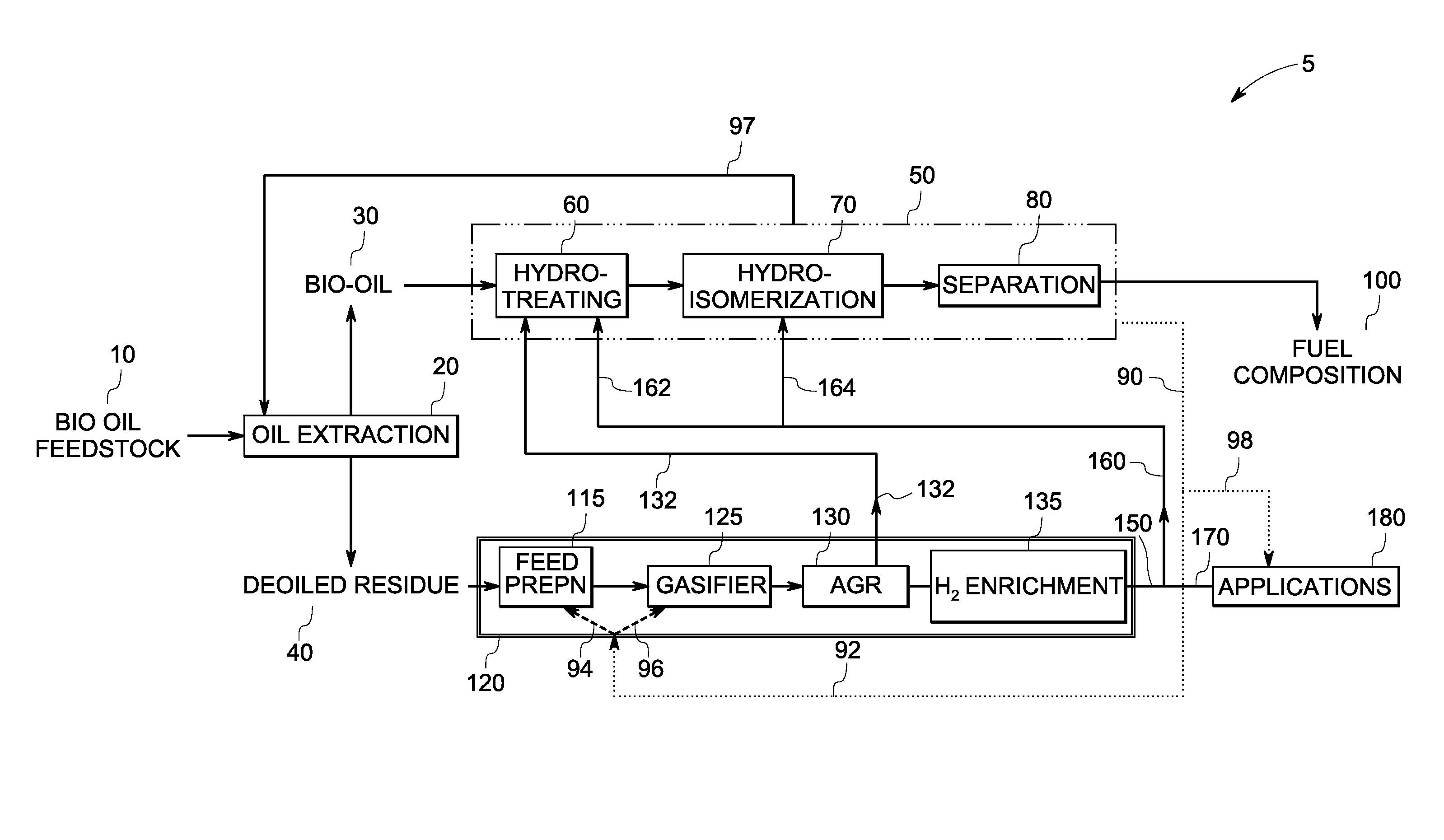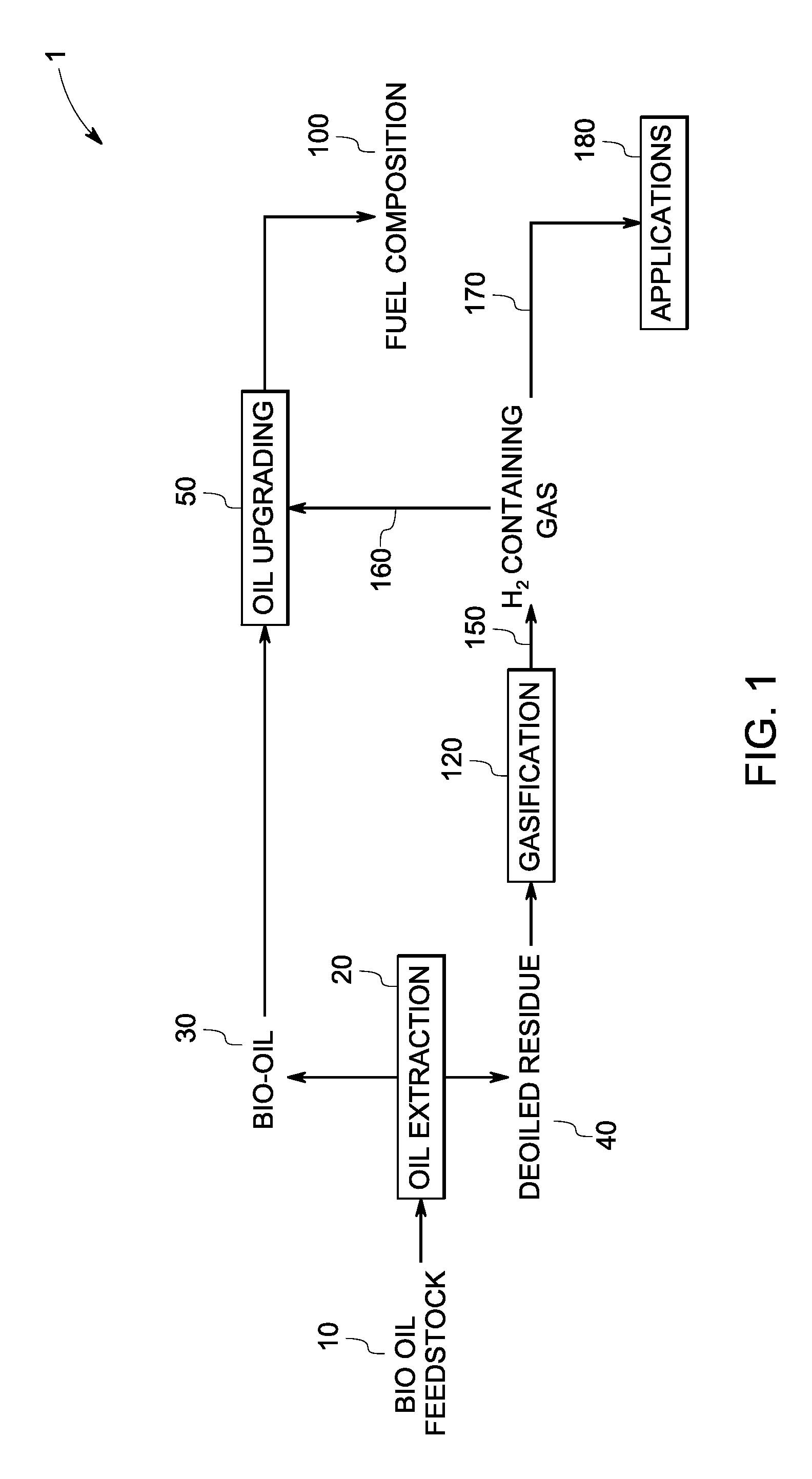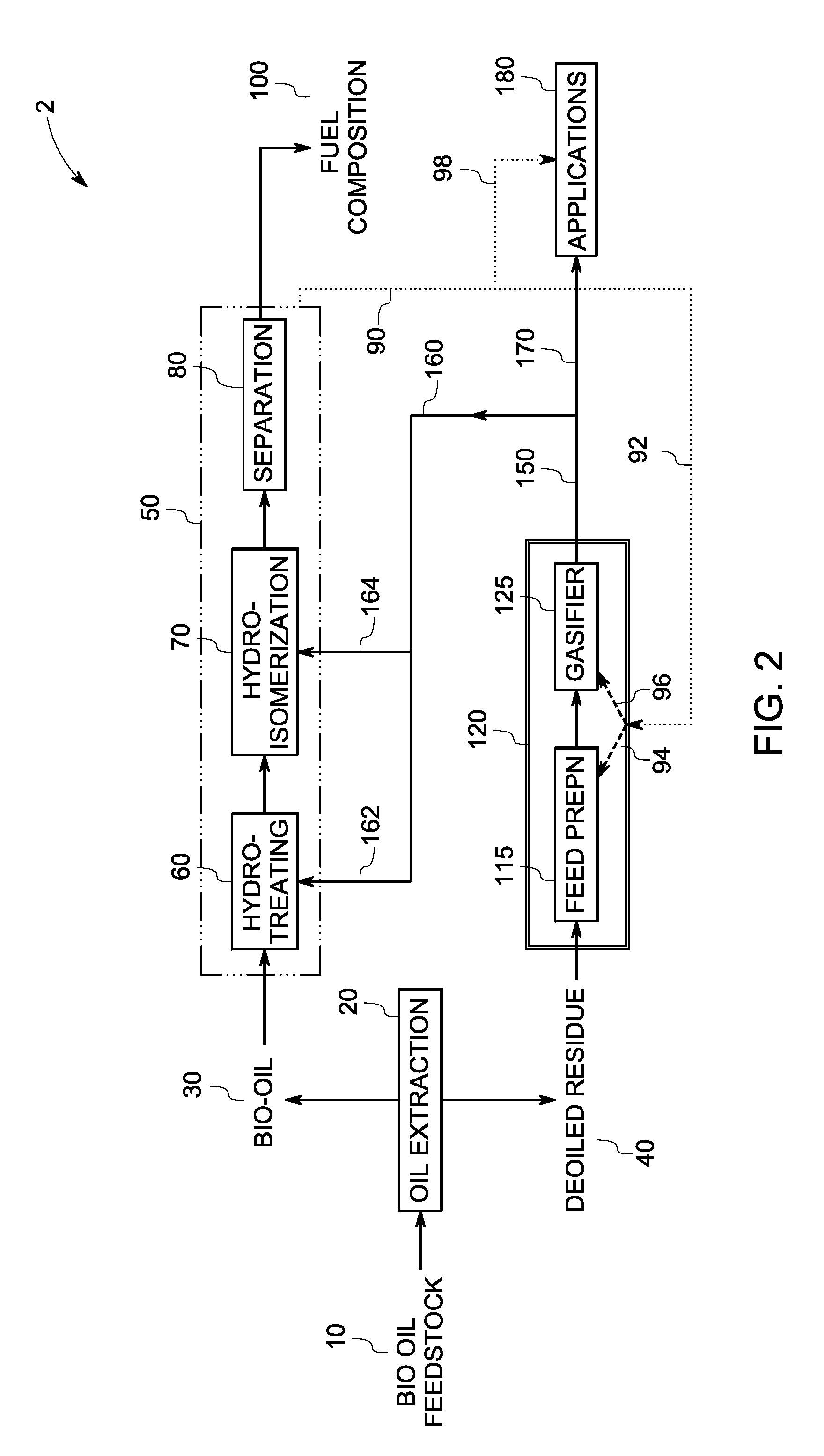Integrated system and method for producing fuel composition from biomass
a biomass and fuel composition technology, applied in the field of biofuels, can solve the problems of many differences between coal and biomass, slow reaction rate, and time-consuming to process a given batch,
- Summary
- Abstract
- Description
- Claims
- Application Information
AI Technical Summary
Benefits of technology
Problems solved by technology
Method used
Image
Examples
examples
[0086]The following examples are presented to further illustrate certain embodiments of the present invention. These examples should not be read to limit the invention in any way.
[0087]Simulations of the process illustrated in the embodiments of the present invention were carried out, using ASPEN Plus. FIG. 7 shows a configuration “7”, of the process provided by one embodiment of the current invention. A soybean material is used as the bio-oil feedstock 10. It is sent to the oil extraction step 20, wherein bio-oil 30 and a deoiled residue (non-oil component) 40 are produced in step 20. In this example, 8170 tons-per-day (tpd) of soybean are fed to the oil extraction step, to produce, 10000 barrels-per-day (bpd) of bio oil 30. The deoiled residue 40 is separated into components like lecithin, hulls and protein meals. In this case, the soybean is separated into 817 tpd of hulls, 5637 tpd meals, and 245 tpd of lecithin. 404 tpd of hulls are separated, and directed to a boiler 200 as st...
PUM
| Property | Measurement | Unit |
|---|---|---|
| temperatures | aaaaa | aaaaa |
| temperatures | aaaaa | aaaaa |
| temperatures | aaaaa | aaaaa |
Abstract
Description
Claims
Application Information
 Login to View More
Login to View More - R&D
- Intellectual Property
- Life Sciences
- Materials
- Tech Scout
- Unparalleled Data Quality
- Higher Quality Content
- 60% Fewer Hallucinations
Browse by: Latest US Patents, China's latest patents, Technical Efficacy Thesaurus, Application Domain, Technology Topic, Popular Technical Reports.
© 2025 PatSnap. All rights reserved.Legal|Privacy policy|Modern Slavery Act Transparency Statement|Sitemap|About US| Contact US: help@patsnap.com



